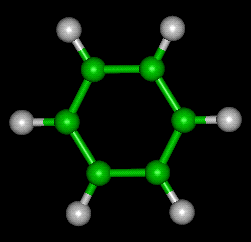BeGood,
I must have misunderstood your post. I thought you were arguing that flagella are the result of self-assembly.
Cells reproduce on their own, this includes bacteria, and this includes bacterial components such as the flagella. Do you disagree?
Yes - I do disagree. Flegella do not reproduce. They are a product of production within the cell - not reproduction on their own.
When have I done this? Please point to a specific instance so that I can rectify the mistake.
I posted two examples earlier. You seemed to be arguing that flagella self-produced like a crystal. I wanted to point out that nothing in your sources implied anything of the sort.
And you call me frustrating. First you are not arguing and now you say flagellum are the result of a self assembly process. Which is it?
Let us look at your sources though.
Your first source - bio.cmu.edu
Flagellum Assembly
The flagellum of Caulobacter is assembled during development of the swarmer cell. Flagellum biogenesis results in the synthesis of a basal body, hook, and flagellar filament at one pole of the developing swarmer cell. This process involves at least 50 genes, most of which have been oganized into a hierarchy that includes four classes of genes. In this hierarchy, the expression of genes in an earlier class is required for expression of the genes in the subsequent class. Additionally, genes that encode structural components of the flagellum are expressed in the order that their gene products are assembled into their structure . Furthermore, the flagellum itself is sequently assembled from the inside of the cell to the outside.
I see the word 'assembly' in your source, but I don't see the word 'self assembly'. Once again, your own source does not say what you claim it says.
Your AIP.org post does support your contention that flagella are the product of self assembly. I thank you for posting something that actually supports your argument. Unfortunately though it only says that it happens and then gives some pretty computer CAD drawings that show flagella assembly but which do not show
self assembly. What I would say about this source is that self-assembly is a very bad hypothesis and my source, as posted, shows not only that the argument for self assembly is bad but also why it is bad. Posting the argument from a credible source is better than what you've posted thus far, but generally speaking specific information in a debate trumps generalities and your source is a three-paragraph assertion that does not tell us how the process occurs. It is conjecture. I'll grant that it is educated conjecture from a reputable source, but as my source tells us that this view exists and what is wrong with it, I would urge you to find something that details the process.
The Wikepedia post also supports you, but let us look at that section in detail:
The components of the flagellum are capable of self-assembly in which the component proteins associate spontaneously without the aid of enzymes or other factors. Both the basal body and the filament have a hollow core, through which the component proteins of the flagellum are able to move into their respective positions. The filament grows at its tip rather than at the base. The basal body has many traits in common with some types of secretory pore which have a hollow rod-like "plug" in their centers extending out through the plasma membrane, and it is thought that bacterial flagella may have evolved from such pores.
Even if the components of the flagellum are capable fo self-assembly, you still have nothing more than a pile of components. What assembles those components? This actually does not refute Dr. Wells at all. In fact, reading the rest of the Wikepedia article shows just how complex the Flagella is, making the argument that the components self-replicated into a working machine sound rather silly.
I am glad that some of your sources really say something along the lines of what you say they say. That is progress. I would ask though that in the future you highlight what you consider the relevant parts as some of the articles you link are very long. Doing so also makes it more difficult for you to
mistakingly provide an irrevelant link.




